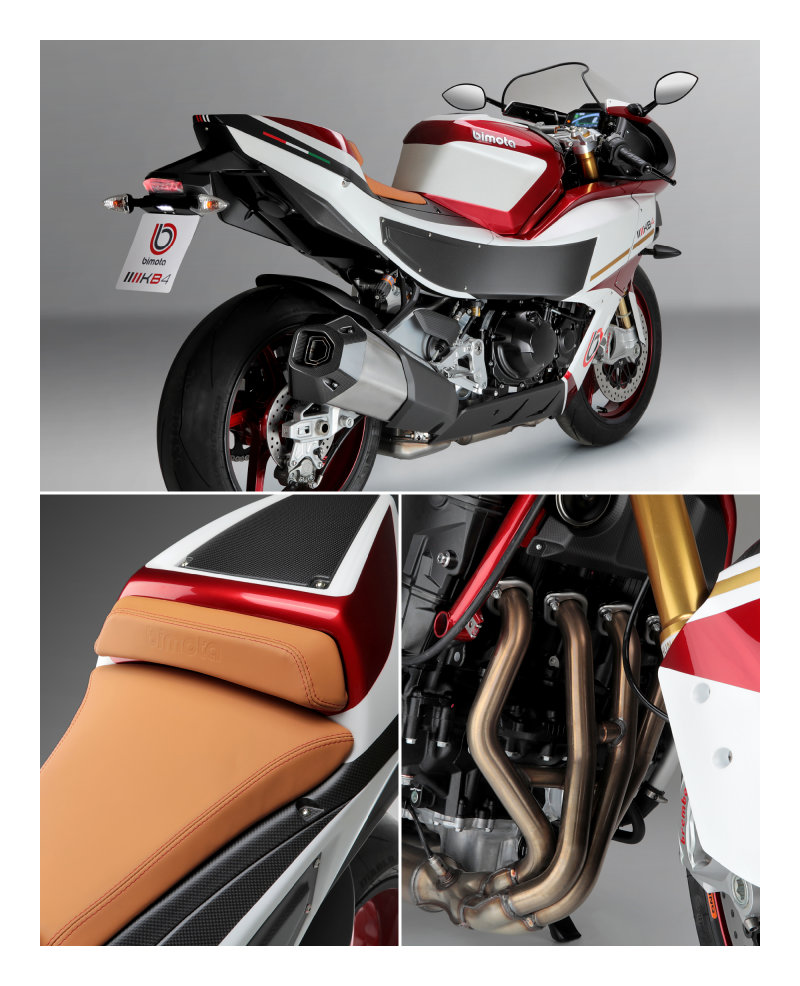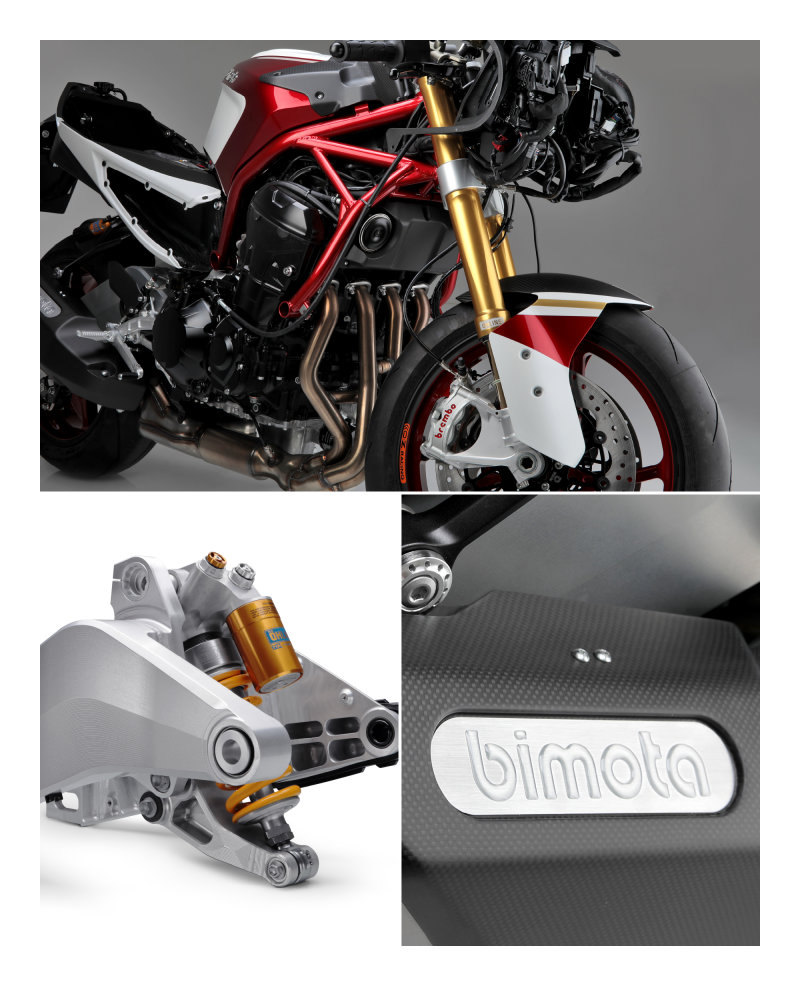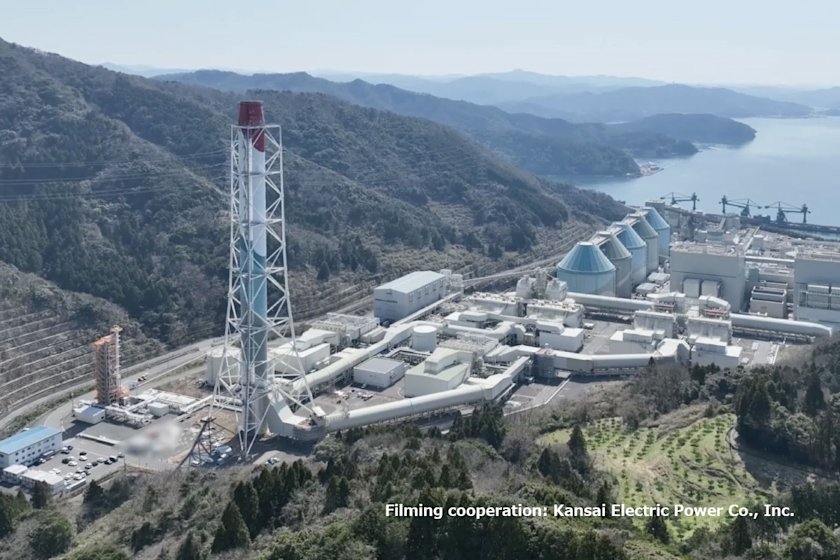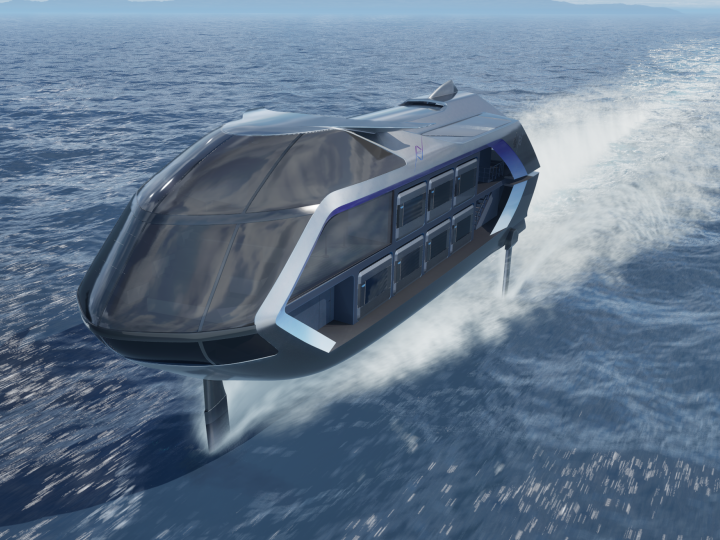Two Brand New Models Released by Bimota x Kawasaki Unique Aesthetics Residing within TESI H2 and KB4
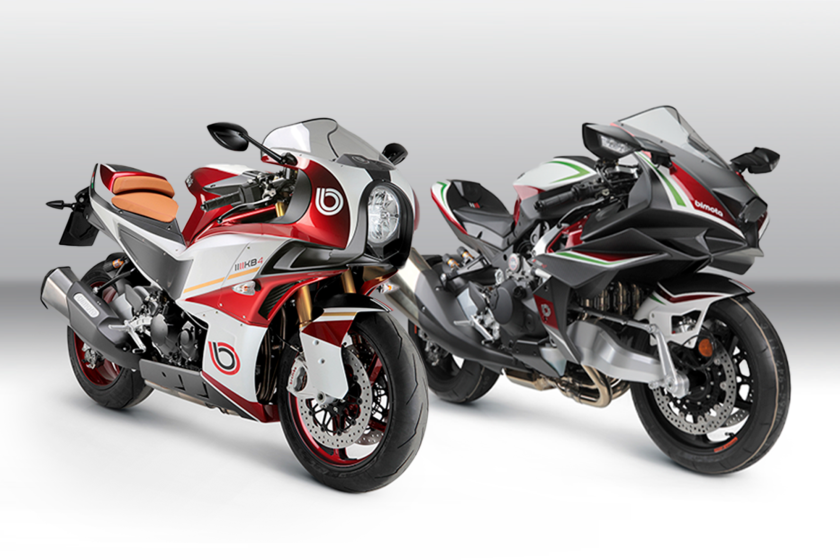
The new Bimota, which was revived by teaming with Kawasaki in 2019, announced its first product, the TESI H2, at the same time as the restart, and then the next model, the KB4, in 2021. The inventive mechanism of renowned designers, the gem-like body produced by Italian artisanship, and fusion with the Kawasaki engine gave birth to treasured motorcycles and attracted and captured the hearts of riders.
The Bimota Myth Comes Back Strong in Cooperation with Kawasaki
“We are going to create a new history of Bimota together with the long-established tradition of Kawasaki engines,” the celebrated designer Pierluigi Marconi, who returned to take a responsible role, said upon the initiation of the new Bimota. He is the legend who designed and equipped the TESI 1D with hub-center steering to realize accurate handling performance*1 and then built the SB6, Bimota’s greatest hit, in the 1990s.
Marconi and Kawasaki Motors chose the memorable TESI H2 as the first model to launch by the new Bimota. The name speaks for itself, since the model is rooted in the TESI 1D, the fabled machine that Marconi created earlier, and reinterpreted in a modern way using cutting-edge technologies.
*1: Ordinary motorcycles have a telescopic front fork that functions as part of the suspension (shock absorption) and the steering mechanism, while in the case of hub-center steering, a swing arm stretches frontward and backward from the engine at the center with a steering shaft arranged in the center of the front wheel hub so that the shock absorption and steering functions are independent. Because the front and rear wheels are joined firmly to the limit, the body is exceptionally rigid, and load transfer during braking and cornering is reduced, leading to the joy of stable handling performance.
TESI H2 -- A Ridable Gem Perfect to Represent the New Bimota
What would the vehicle be like if the concept of Bimota, which is to equip the world’s best chassis as created by Bimota with the world’s greatest engine, were to materialize now in the 21st century? —The answer is the TESI H2. The body employs mechanical hub-center steering, which is regarded as the technical identity of Marconi, and the high-performance supercharged engine used in the Kawasaki Ninja H2 series.
With the inheritance of the name TESI, the innovative hub-center steering structure has been reconstructed via the fresh technologies of this era. As the direct connection stated in its vehicle concept suggests, the hub-center steering mechanism connects the engine and the wheels in the simplest way, which shortens the distance between the rider and the engine, bringing a deep sense of unity with the machine while riding.
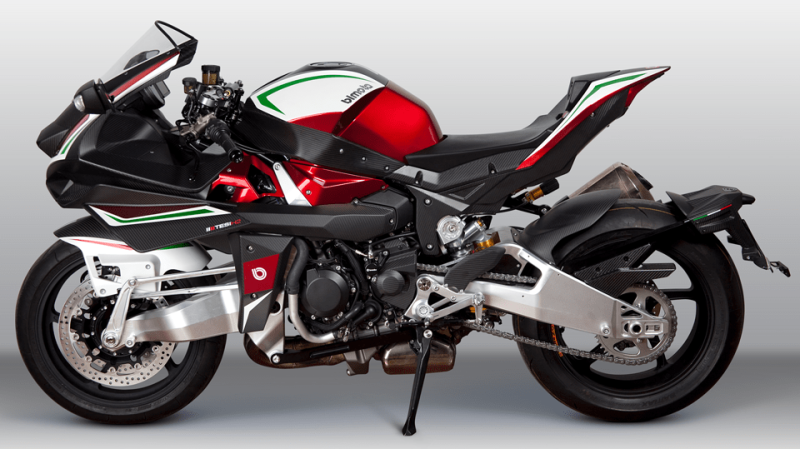
Beautiful parts machined from aluminum blocks and strong, lightweight carbon-fiber composites are generously used, in addition to the traditional manual method inherited by their studio in Italy of assembling the finished components one by one by craftspeople. Each part is completed with astonishing accuracy and no compromise to radiate an aura of extreme beauty accompanied by a set of functions. Needless to say, the breathtaking handling performance in absolute harmony with the components realizes the excellence of the proud TESI H2. It is certainly the work of Bimota that fascinates spectators, riders, and owners.
With its overwhelming performance, jewelry-like aesthetic details, and rarity from limited production, the TESI H2 is the ultimate in motorcycles that have all the features appropriate as the flagship of the new Bimota.
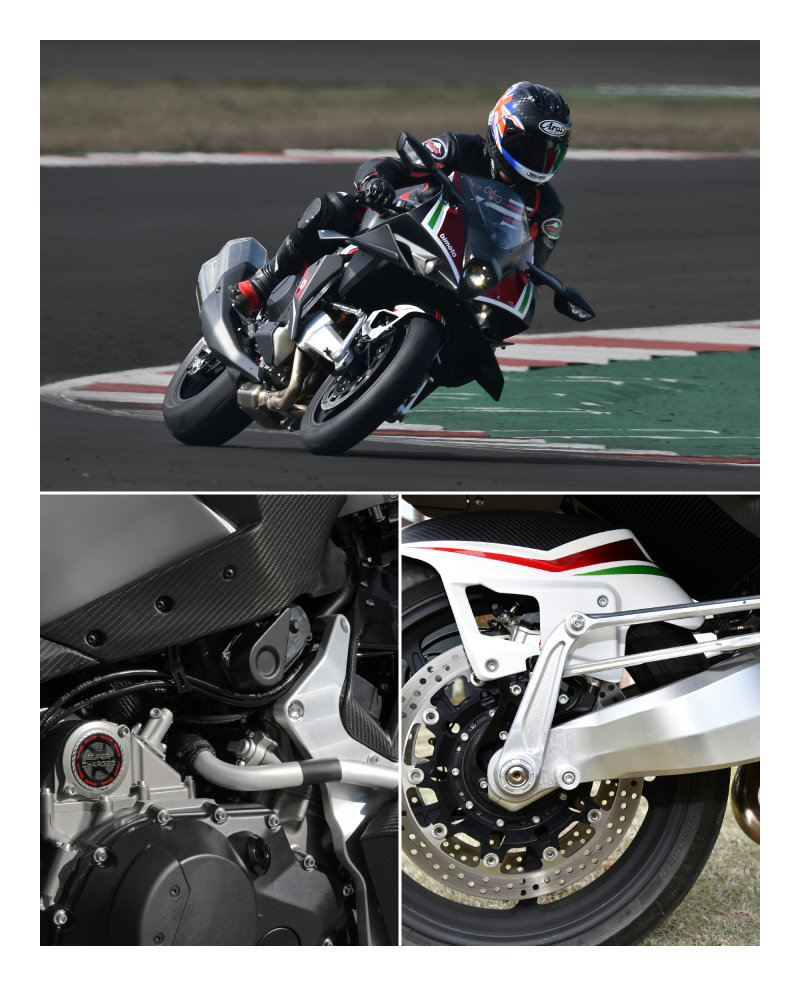
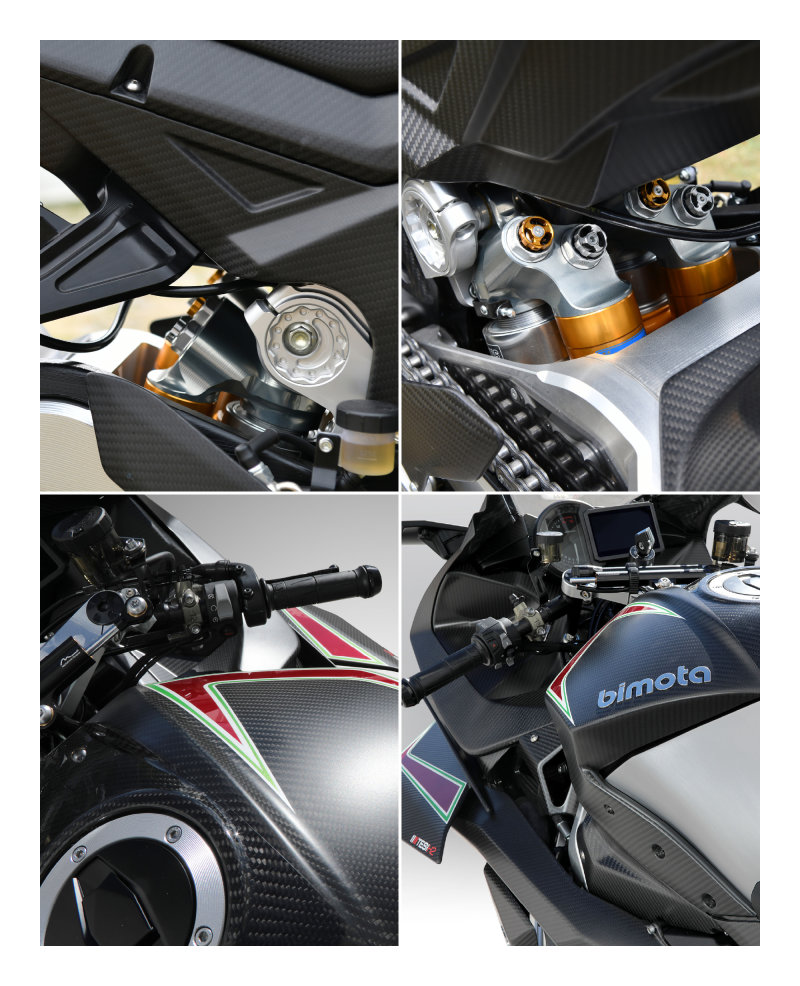
KB4 – The Most Recent Masterpiece Produced by Bimota x Kawasaki in the 21st Century
The KB4 was developed according to the concept—easy to ride, torquey and lightweight—and the connections between the rider and the ground and between the vehicle and the rider are considered the most important. In contrast with the TESI H2, which professes to be an original, solitary, high-performance machine, the KB4 is a fun-to-ride model emphasizing easy operation, stability, and good balance. The classical style reminiscent of Bimota in the 1970s is another great point of appeal of the KB4 for the emotions of riders. “The Bimota KB1 produced in 1978 was the first with a Kawasaki engine, and the KB4 is the newest masterpiece for us,” says Marconi as he describes the second product launched into the world by the new Bimota.

For the KB4, a dedicated lightweight chassis has been created that is as compact as 600 cc super-sport models. The light body with a short wheelbase and optimum front and rear weight distribution has a parallel four-cylinder engine unit from the Kawasaki Ninja 1000SX, which exerts top-level torque in the 1000 cc category. The combination of a small, light, well-proportioned body with great reflexes and a powerful heart is the ideal recipe for lightweight sport vehicles. Moreover, in the same way as the TESI H2, the lavish use of select materials, including machined aluminum, carbon fiber composites, and genuine leather, is characteristic of a true Bimota. Any one of the elaborate parts is incomparable, and each functional element of the KB4 represents stunning beauty. Naturally, each KB4 is assembled and painted by hand by Italian craftspeople.
The TESI H2 and the KB4 feature different characteristics, but both are treasures on the road this century created by an artistic sensibility based on traditional methods of production using luxury materials and state-of-the-art technologies. Then, those who share in the legend of Bimota, which has been revived in the present day, are the owners of these motorcycles.
